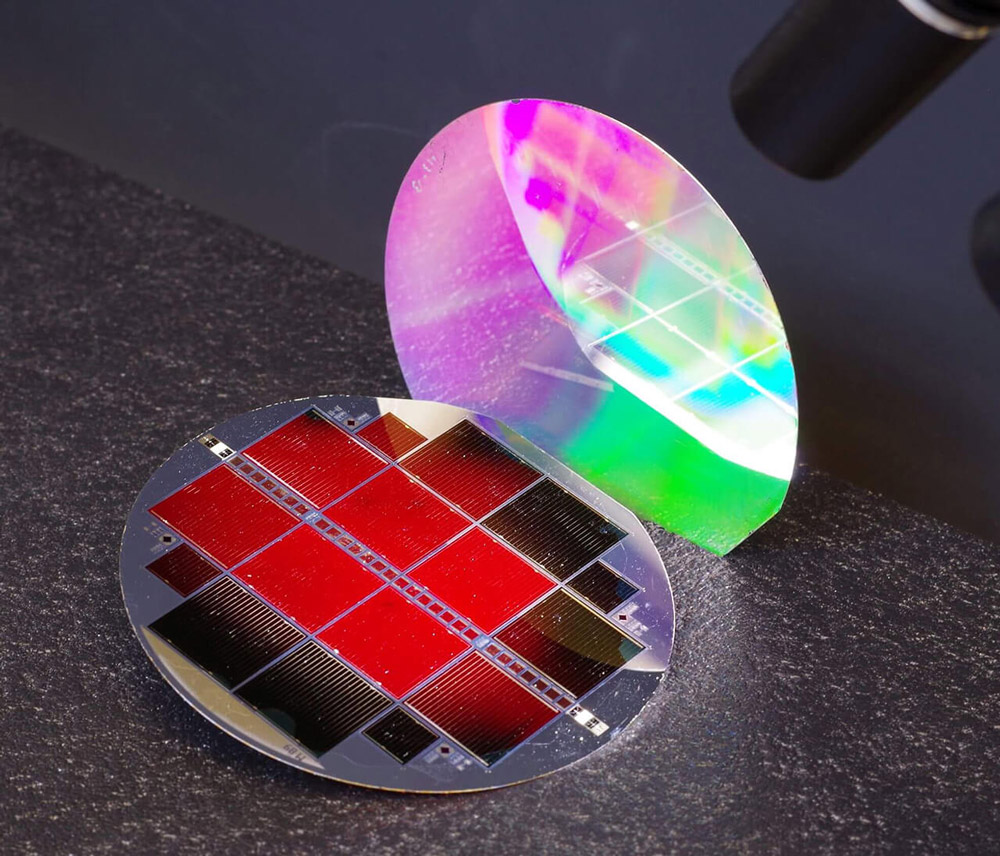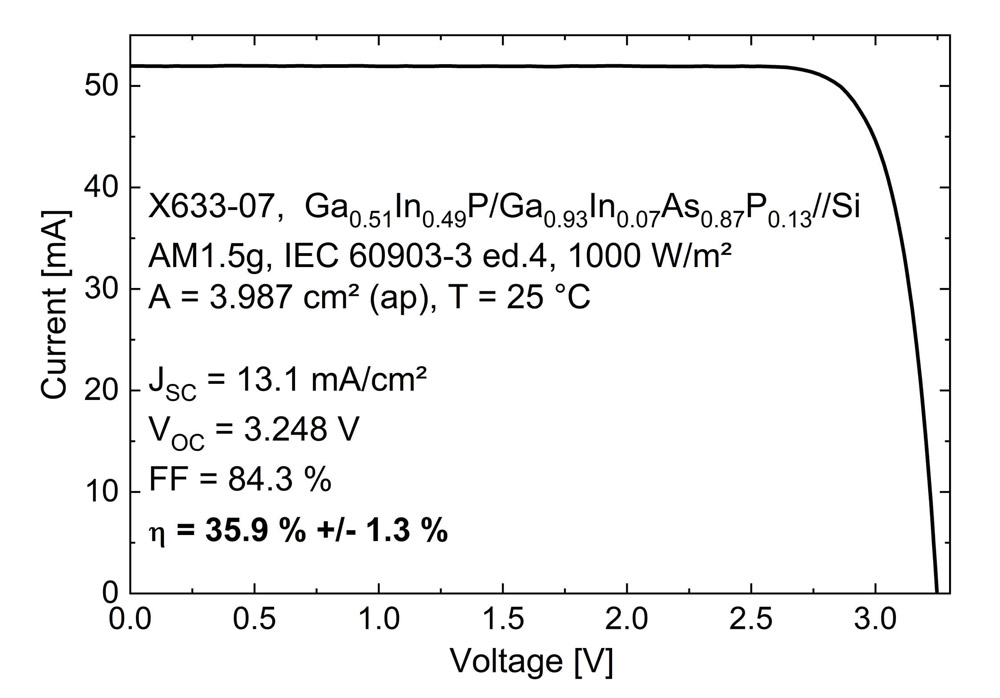News: Photovoltaics
23 April 2021
Fraunhofer ISE raises tandem PV efficiency record to 35.9% using monolithic III-V//Si solar cell
Fraunhofer Institute for Solar Energy Systems ISE of Freiburg, Germany has again set a new solar energy conversion efficiency record for a monolithic tandem cell made of III-V and silicon semiconductors.
The new monolithic triple-junction solar cell – specifically, a III-V//Si tandem solar cell – converts 35.9% of sunlight into electrical energy (measured under the terrestrial AM1.5g spectrum), demonstrating the potential of silicon-based tandem photovoltaics.
In the new record cell, the III-V semiconductor layers are connected directly to the silicon sub-cell on the atomic level. From the outside, the cell resembles a conventional two-terminal solar cell, but it achieves the same efficiency as the best four-terminal solar cells with mechanically stacked structures, as published jointly by NREL, CSEM and EPFL in 2017.

Picture: The new 35.9%-efficient III-V//Si tandem solar cell. The top subcell glows red, which is a sign of outstanding material quality. The nanostructured back side of the cell shimmers in rainbow colors.
“The use of a new compound semiconductor (GaInAsP) for the middle cell was a key step in our success in achieving the improved efficiency value,” notes Patrick Schygulla, doctoral student in the Department of III-V Photovoltaics and Concentrator Technology at Fraunhofer ISE. “The new material allowed us to further improve the lifetime of the charge carriers and thus achieve a higher cell voltage,” he adds. “It’s great to see how our material development has successfully contributed to improvements in III-V//Si triple-junction solar cells.”

Picture: I-V characteristic of the new III-V//Si triple-junction solar cell, measured at Fraunhofer ISE CalLab PV Cells.
Initial applications for high-efficiency III-V//Si tandem cells are found where the power generation per area plays an important role, for example in electrically powered aircraft and drones. Today, the production costs of the new cells are still significantly higher than conventional single-junction crystalline silicon solar cells. This is due to the complex epitaxy step of the III-V layers and the many additional semiconductor processes required to manufacture the cells. The researchers at Fraunhofer ISE are working intensively to make the production more cost-effective in the future and thus also address the terrestrial photovoltaic market.
“Combining III-V semiconductor materials on silicon is one of the approaches that we are pursuing with tandem structures (i.e. the combination of different high-performance materials) in order to achieve higher solar cell efficiencies,” says Fraunhofer ISE director professor Andreas Bett. “It will be a few years before any PV modules made from the type of solar cell presented here are available on the market,” he adds. “However, this is an important, forward-looking path in the context of the photovoltaic expansion which is necessary for a sustainable energy supply.”
Development of the III-V//Si tandem solar cells was funded by the German Federal Ministry for Economic Affairs and Energy (BMWi) in the project PoTaSi (‘Demonstration of the Potential of Monolithic Tandem Solar Cells Made of III-V Semiconductors and Silicon’) as well as through a doctoral stipend from the Heinrich Böll Foundation.
Fraunhofer ISE sets efficiency record of 25.9% for III-V/Si tandem cell grown directly on silicon








